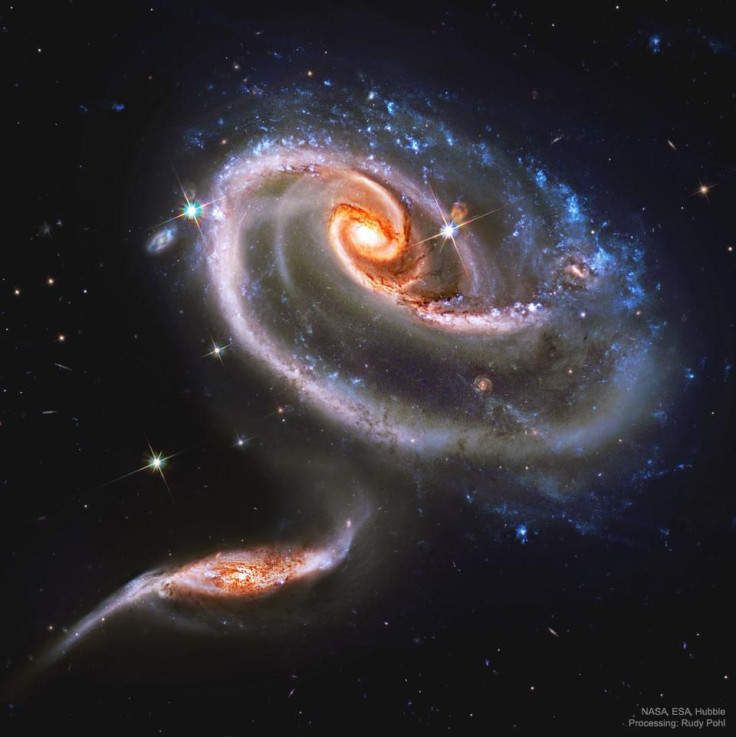NASA Shares Stunning Image Of ‘Titanic Battle’ Between Spiral Galaxies

NASA recently shared a stunning image of a major collision between two galaxies. According to the agency, the photo of the cosmic event was captured by the Hubble Space Telescope.
The latest image captured by Hubble, which is operated by NASA and the European Space Agency, features two spiral galaxies interacting with one another. NASA noted that the two cosmic bodies were spotted in the Andromeda constellation about 300 million light-years away from Earth’s neighborhood.
In the photo, the larger galaxy is known UGC 1810 while the smaller galaxy below it has been identified as Arp 273. According to NASA, the two galaxies are currently in the process of colliding into one another, which will most likely lead to a merger once it is complete.
Due to the collision, as well as the presence of other galaxies in the foreground, UGC 1810 is displaying a blue outer ring formed by massive stars. NASA explained that this outer feature most likely emerged due to gravitational forces affecting UGC 1810.
“The overall shape of the UGC 1810 -- in particular its blue outer ring -- is likely a result of wild and violent gravitational interactions,” the agency said in a statement. “The blue color of the outer ring at the top is caused by massive stars that are blue hot and have formed only in the past few million years.”
Both UGC 1810 and Arp 273 are classified as spiral galaxies, which means they have a distinct shape characterized by their rotating arms. Although both galaxies are from the same family, UGC 1810 has a more defined shape as compared to Arp 273.
It is not clear if Arp 273’s shape was distorted by the collision with UGC 1810 or if another cosmic structure in space caused its appearance.
Since UGC 1810 is larger compared to Arp 273, the former will most likely end up devouring the latter as well as other nearby smaller galaxies during the course of the collision.
“UGC 1810 will devour its galactic sidekicks over the next billion years and settle into a classic spiral form,” NASA stated.
© Copyright IBTimes 2024. All rights reserved.




















